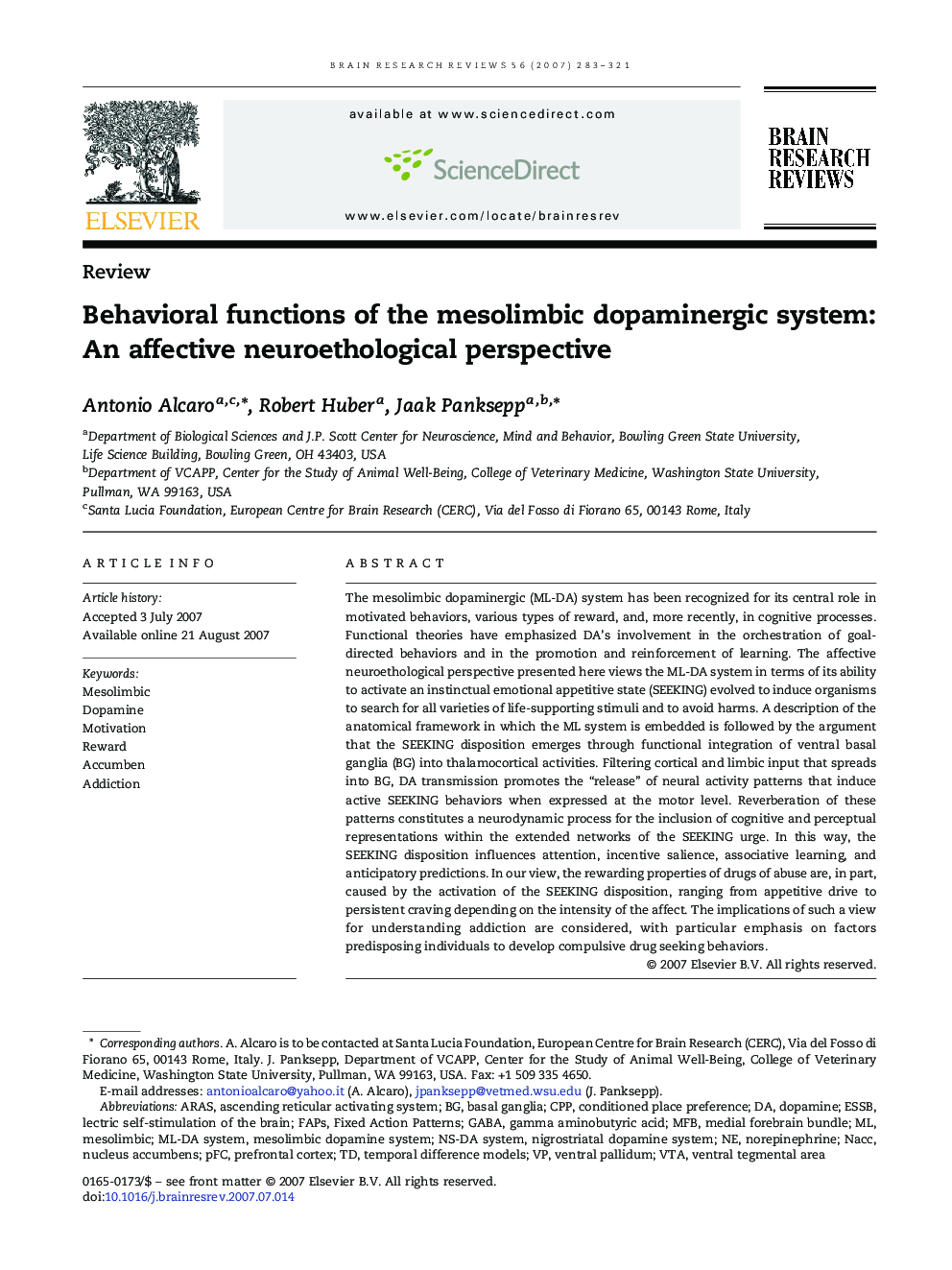| کد مقاله | کد نشریه | سال انتشار | مقاله انگلیسی | نسخه تمام متن |
|---|---|---|---|---|
| 4333993 | 1294762 | 2007 | 39 صفحه PDF | دانلود رایگان |
عنوان انگلیسی مقاله ISI
Behavioral functions of the mesolimbic dopaminergic system: An affective neuroethological perspective
دانلود مقاله + سفارش ترجمه
دانلود مقاله ISI انگلیسی
رایگان برای ایرانیان
کلمات کلیدی
NAccFixed action patternsNigrostriatal dopamine systemFAPSMesolimbicMFBVTACPPPFCVentral pallidum - pallidum درشتARAS - ارسGamma aminobutyric acid - اسید گاما آمینو بوتیریکAddiction - اعتیاد Motivation - انگیزشmedial forebrain bundle - بسته نرم افزاری پروبیالconditioned place preference - ترجیح محل موظف استDopamine - دوپامینMesolimbic dopamine system - سیستم دوپامین Mesolimbicascending reticular activating system - سیستم فعال سازی مجدد صعودیbasal ganglia - عقدههای قاعدهایprefrontal cortex - قشر prefrontalventral tegmental area - ناحیه تگمنتوم شکمیnorepinephrine - نوراپی نفرینNucleus accumbens - هسته accumbensReward - پاداشGABA - گابا
موضوعات مرتبط
علوم زیستی و بیوفناوری
علم عصب شناسی
علوم اعصاب (عمومی)
پیش نمایش صفحه اول مقاله

چکیده انگلیسی
The mesolimbic dopaminergic (ML-DA) system has been recognized for its central role in motivated behaviors, various types of reward, and, more recently, in cognitive processes. Functional theories have emphasized DA's involvement in the orchestration of goal-directed behaviors and in the promotion and reinforcement of learning. The affective neuroethological perspective presented here views the ML-DA system in terms of its ability to activate an instinctual emotional appetitive state (SEEKING) evolved to induce organisms to search for all varieties of life-supporting stimuli and to avoid harms. A description of the anatomical framework in which the ML system is embedded is followed by the argument that the SEEKING disposition emerges through functional integration of ventral basal ganglia (BG) into thalamocortical activities. Filtering cortical and limbic input that spreads into BG, DA transmission promotes the “release” of neural activity patterns that induce active SEEKING behaviors when expressed at the motor level. Reverberation of these patterns constitutes a neurodynamic process for the inclusion of cognitive and perceptual representations within the extended networks of the SEEKING urge. In this way, the SEEKING disposition influences attention, incentive salience, associative learning, and anticipatory predictions. In our view, the rewarding properties of drugs of abuse are, in part, caused by the activation of the SEEKING disposition, ranging from appetitive drive to persistent craving depending on the intensity of the affect. The implications of such a view for understanding addiction are considered, with particular emphasis on factors predisposing individuals to develop compulsive drug seeking behaviors.
ناشر
Database: Elsevier - ScienceDirect (ساینس دایرکت)
Journal: Brain Research Reviews - Volume 56, Issue 2, December 2007, Pages 283-321
Journal: Brain Research Reviews - Volume 56, Issue 2, December 2007, Pages 283-321
نویسندگان
Antonio Alcaro, Robert Huber, Jaak Panksepp,